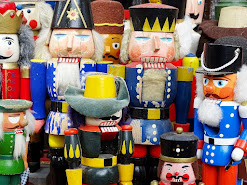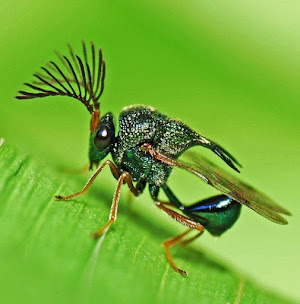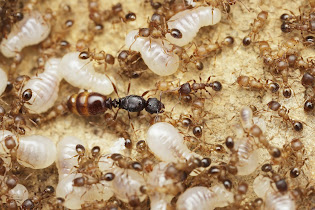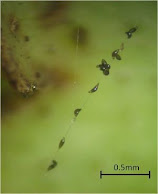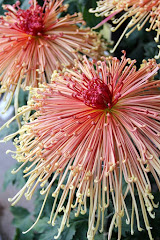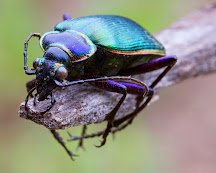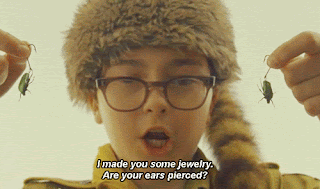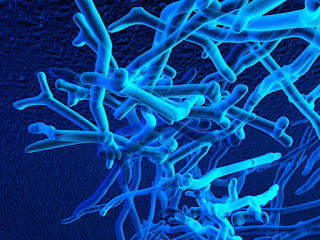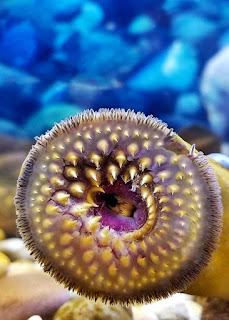In keeping with my October theme of creepy critters, I’m bringing you swarms. The sheer number of swarming animals is not just creepy, it’s deeply unsettling for most people. The feeling is such a profound part of the human psyche that swarms even surface in religious teachings – there are the biblical plagues in the Old Testament and the Miracle of the Gulls in Mormonism.
Swarming can be found throughout the animal world, among all types of creatures in the air, on land, and in the sea. The reason behind much of this behavior is still a mystery, but scientists have figured out why some occur. One strong impetus for swarms is the search for food. This is the case for the largest swarms on earth, locusts, and for the daily swarms of bats as they leave their caves in search of food. In the ocean, swarms of sardines and krill will trigger other swarms of animals seeking to feed on them. Swarms born of swarms. Despite drawing predatory attention, animals of all kinds swarm for protection from predators. While some members of the swarm may be picked off, the individual still has an improved chance for survival in a large group. This is the old “safety in numbers” logic. Swarms can be also created by climate, seasonal, or environmental changes. We see this in migratory patterns or the simple business of moving to a new house (which causes swarming in bees and ants). Lastly, swarms are set off by the biological imperative to reproduce. In virtually every part of the natural world there are animals seeking love in large groups.

The effects of swarms are mostly confined to the animals involved, with some important exceptions. Locusts, for instance, cause massive destruction to the environment and decimate food resources wherever they go. Last year (2020) residents of East Africa were beset by a massive swarm that spanned nearly 930 square miles and contained an estimated 200 billion insects. By far the largest swarms on earth, locust swarms have the ability to drastically alter life wherever they go. According to this article, the conditions that locusts need to thrive (dry weather followed by torrential rain) is becoming more common due to climate change. Also, swarming locusts are biologically compelled to reproduce faster and eat more while swarming. So, there’s every reason to believe that these swarms will only continue to grow in frequency and size. Which could become a hazard for life worldwide. Luckily, there are smart people working hard on solutions, including this one that turns locusts into animal feed.

If you read
my centipede blog, you know how I feel about centipedes and millipedes (not a fan of those squirmy legs), so millipede swarms are super-duper creepy to me. Apparently driven by an irresistible food source, millipedes in Senegal pile on top of each other to get at it (see the video
here).
In Japan, millipedes swarm in large enough numbers to stop train traffic. Scientists have now determined that these poisonous creatures are part of a brood cycle that emerges every eight years, similar to the life cycle of cicada.
 One of the most incredible swarms on the planet is the march of the Red Crabs of Christmas Island. This small island is off the northwest coast of Australia and has a population of 2,000. People, that is. Its crab population is 40,000,000. Every year at this time (October-November), the crabs march from their homes in the forest down to the beach for a festival of breeding and nothing stops them. Their relentless march is annoying and messy (especially when thousands lie dead on roadways), but Christmas Island inhabitants have learned how to live with them. Among other concessions to the crabs, they’ve built tunnels under roadways for the crabs to use. For more on this cool phenomenon, including what invasive species is threatening it, check out this article.
One of the most incredible swarms on the planet is the march of the Red Crabs of Christmas Island. This small island is off the northwest coast of Australia and has a population of 2,000. People, that is. Its crab population is 40,000,000. Every year at this time (October-November), the crabs march from their homes in the forest down to the beach for a festival of breeding and nothing stops them. Their relentless march is annoying and messy (especially when thousands lie dead on roadways), but Christmas Island inhabitants have learned how to live with them. Among other concessions to the crabs, they’ve built tunnels under roadways for the crabs to use. For more on this cool phenomenon, including what invasive species is threatening it, check out this article.

Speaking of crabs, if you who don’t like swimming in the ocean because you don’t know what’s underneath you, you should not look at the video of this next swarm. While researching something else entirely off the coast of Panama, scientists discovered a massive swarm of Tuna Crabs moving along the bottom.
According to this video, they say there are thousands of crabs in the horde, but it looks like zillions to me. Cool…and creepy.
Right up the coast from the Tuna Crab swarm is Costa Rica, home to large populations of Olive Ridley Sea Turtles. In the Ostional National Wildlife Refuge females of this species swarm the beach to lay their eggs. Their swarm is known as a mass arrival and happens every month. In November 2016 biologist, Vanessa Bézy captured something special on her drone camera – a swarm of hundreds of thousands of turtles; the largest swarm ever filmed. Why there were so many remains a mystery, but it is a spectacular sight. Protecting these turtles continues to be a high priority to environmentalists. Learn more (and see the amazing video) from National Geographic.

Most people would consider fruit flies to be annoying but otherwise unremarkable. But, as it turns out, those little fliers carry big secrets. It seems they are into free love and they swarm to get in on the action. Their urge to reproduce turns them into sex-crazed, orgy-loving little beasties. According to this article, their initial one-on-one heterosexual coupling escalates into an extended session of group sex. There’s more, but I’ll be discreet and let you read it for yourself.
Monarch butterflies create epic and beautiful swarms as they migrate to and from their winter homes in the mountains of Mexico. Much of their travels are still a mystery, but we do know that they number in the millions (150,000,000 or more) once they arrive. Here is a video done by National Geographic using a fake hummingbird camera to get up close without disturbing them. It’s amazing. And, this video, lets you hear how sounds there.
And then there are the spider swarms. And for many people, these are the creepiest of all. In the fall months here in the Southwest, male tarantulas leave their burrows and take to the roads in search of lady tarantulas. They number in the hundreds, and even thousands, as they venture out (
here’s more from Marfa, Texas). While the tarantulas we see in our country are generally harmless to people, there are others that are more problematic. Case in point: Australian Diving Tarantulas (yes, they go underwater). These guys have a particularly strong venom that can severely sicken a person. And, in 2015 (for reasons unknown), roughly 25,000 of these spiders swarmed the little town of Maningrada, Australia. That must have been a very scary scene, even for the bravest of spider-lovers. Another truly frightening spider swarm happed
in 2011 in Pakistan and, to be honest, this is where my love of nature crashes right into my tapped-down arachnophobia. That year, after unprecedented flooding, the arachnid population moved to high ground. Specifically, into trees. Once there, they set up house and spun webs. Tree after tree was covered in webs in which millions of 2-inch spiders lived. Altogether too much for me.
Here’s wishing you a happy, creepy Halloween… and if you come across a swarm, get out of the way.
Submitted by Pam
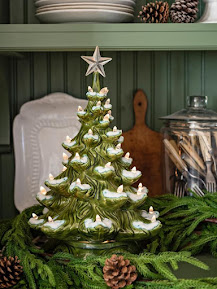 Kitsch is king in vintage decorations, so you have a great deal of leeway in choosing. Think rocking horses, Christmas villages, wreaths, tree toppers and wall hangings. All of these are available retro-style, extra-cheesy optional. Here’s some examples.
Kitsch is king in vintage decorations, so you have a great deal of leeway in choosing. Think rocking horses, Christmas villages, wreaths, tree toppers and wall hangings. All of these are available retro-style, extra-cheesy optional. Here’s some examples.



